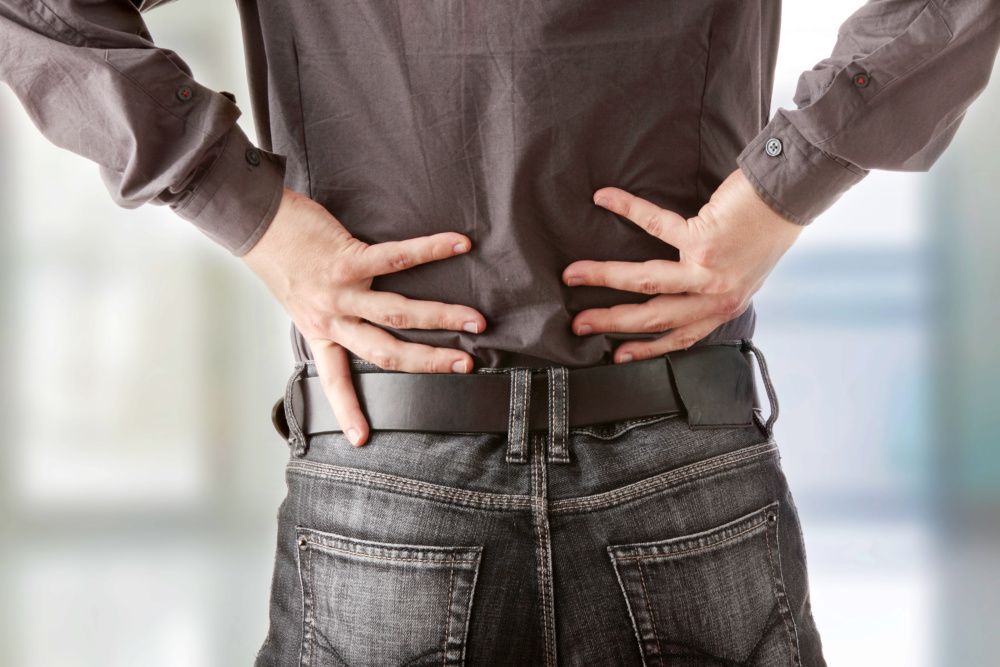How to Avoid Developing Back Pain at Work
Article provided by Dr. Melissa Macias
One of the biggest contributors to back pain in adults is the workplace. We expect work to be difficult, to challenge us and to be rewarding, but all of that hard work can end up in a lifetime of pain. Treating back pain caused in the workplace starts with understanding why this pain may develop. When you understand the causes of your pain, you can create a plan for treating it.
What is Causing My Back Pain in the Workplace?
Some of the more physical jobs such as warehouse work and healthcare workers can easily cause both temporary and permanent back pain. This is due to constant lifting, twisting, bending and sudden shifts in movement. A little soreness is understandable in these types of jobs, but even minor injuries and poor physical practices while working can result in long-lasting, recurrent and even permanent back pain.
Those in less physically demanding environments, such as offices, are also very susceptible to back problems. The human body was not meant to be in a sitting position, yet many people spend a good chunk of their days at work sitting in a chair. Additionally, most people don’t practice proper posture while sitting or standing. This constant pressure on the back can easily cause chronic back pain, and serious cases can involve permanent back problems.
Stretching and Breaks
One of the best ways to stop back pain and injury before it even starts is by stretching. When you stretch, you’re improving your flexibility and loosening up tight muscles. You’ll be preparing your muscles and joints for long periods of physical exertion as well as sitting and standing.
Taking regular breaks out of your day to stretch is also important in preventing workplace related back pain and injuries. Simply taking a few minutes out of your schedule on a regular basis to do a few simple stretches can reinvigorate the muscles and work out some of the kinks in your back that you may have accumulated while working.
Proper Standing Posture
If you have a job that requires you to be on your feet for much of the day, such as sales or food service, you can greatly reduce back pain by practicing good standing posture. Keep your head in line with your shoulders and keep your shoulders in line with your pelvis. Gently bring in your abdominal muscles and buttocks. Keep your feet apart at about shoulder width to help distribute weight evenly. Do not force yourself to tense up. Good posture does not mean being rigid, and doing so may actually increase the chances of back pain.
Feet Support
While standing for long periods of time, you can further reduce stress on the back by wearing supportive and cushioning footwear. If you stand mostly in one spot all day, you can buy special soft rubber mats to stand on that mimic the effects of orthopedic shoes. Finally, you can simply prop up one foot onto a box or footrest while standing to reduce the pressure. Make sure that you switch feet every so often to avoid overtaxing the other foot.
Proper Sitting Posture
Sit far back on the chair until your buttocks are in the space between the back of the chair and the seat. Keep your back against the backrest and your head up. Plant your feet firmly on the ground, and ensure that your knees align with your hips. Set up the height of your chair or desk to allow you to easily rest your arms at elbow height. Additionally, set up your computer monitor so that it’s at eye level. If you’re working on a laptop at a desk, you can purchase stands that increase the height of the monitor as well as external keyboards and mice that allow you to maintain your posture.
Many of these tips also apply to commercial vehicle drivers and those with long commutes, but you’ll also need to take your distance from the steering wheel into consideration. Make sure you’re close enough to comfortably control the steering wheel with your elbows bent slightly. If you’re too close, you may force yourself into a slouching position, and you may end up putting yourself in danger in the event of a crash. If you’re too far, you may need to bend over to see properly, and the additional reaching motion puts undue stress on your back and neck. For further support, put a rolled up towel or small pillow behind your lower back when you drive.
Lifting Tips
Lifting heavy objects is easier and safer for your back if you lift from at least hip level. Whenever possible, keep heavy loads on elevated surfaces such as shelves and stacking pallets.
Additionally, keep loads closer to the center of gravity while carrying them. Try to keep boxes close to your chest instead of hanging them down near your hip. Certain long items such as pipes rolled up rugs and some construction materials are better suited for carrying over your shoulder.
While lifting, avoid twisting your body as much as possible. The back is not designed for twisting and odd angles. When you need to turn, shift your entire body instead of just your upper body.
Conclusion
The workplace is a very common source of back pain, but avoiding it is very possible. With some simple changes in behavior and being mindful of your body’s movements throughout the day, you can keep your back pain free.

Dr. Melissa Macias
For More Information visit her website: HERE
1227 3rd Street, Corpus Christi, TX. 78404
(361) 883-4323







Recent Comments